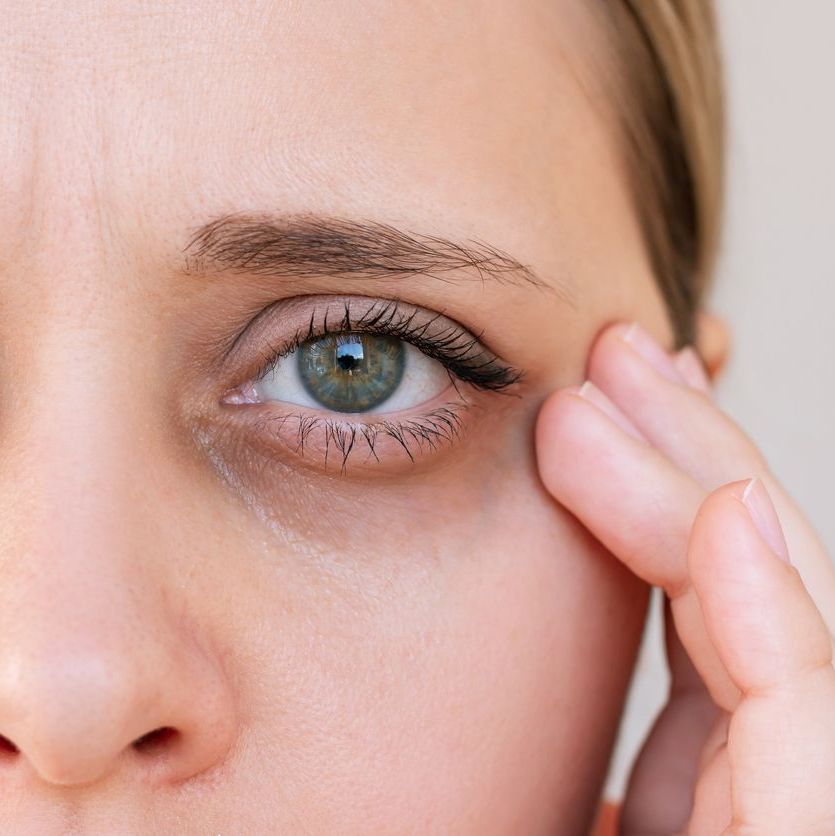Have you ever noticed tiny spots, squiggly lines, or cobweb-like shapes drifting across your vision, especially when looking at a bright sky or a plain wall? These are known as eye floaters, also called vitreous floaters, and while they’re usually harmless, they can sometimes indicate underlying eye conditions that require medical attention.
Eye Floaters: What Are They and When to Be Concerned

What Are Eye Floaters (Vitreous Floaters)?
Floaters are small, shadowy shapes that seem to drift in and out of your field of vision. They move when your eyes move and often dart away when you try to focus on them. These floaters are actually tiny clumps of gel or cells inside the vitreous humor, the clear, jelly-like substance that fills the inside of your eye.
When light enters your eye, these clumps cast shadows on the retina, which creates the floating shapes you see. Floaters can appear in different forms, such as:
- Specks or dots
- Threads or cobwebs
- Rings or squiggly lines
- Cloudy patches

What Causes Floaters?
Eye floaters are most commonly associated with the natural aging process, but several other factors can contribute to their appearance. Some common causes include:
Age-related Changes
As we age, the vitreous inside the eye gradually shrinks and liquefies, leading to the formation of clumps and strands. This process, known as vitreous degeneration, is the most common cause of floaters and typically begins around age 50.
Posterior Vitreous Detachment (PVD)
Over time, the vitreous can pull away from the retina, a condition called posterior vitreous detachment. This is a natural part of aging but can lead to an increase in floaters and flashes of light.
Eye Injuries
Blunt trauma or injury to the eye can cause changes in the vitreous and lead to the sudden appearance of floaters.
Eye Conditions and Diseases
Certain eye diseases and conditions can contribute to floaters, including:
When Should You Be Concerned About Floaters?
While occasional floaters are usually nothing to worry about, there are times when they may indicate a more serious issue. You should seek medical attention if you experience:
- A sudden increase in floaters: If you notice a significant and sudden increase in the number of floaters, it could be a sign of vitreous detachment or retinal damage.
- Flashes of light: Seeing flashes or streaks of light alongside floaters may indicate that the vitreous is pulling on the retina, which could lead to a retinal tear or detachment.
- A dark curtain or shadow in your vision: If you notice a dark shadow or a loss of peripheral vision, it could be a sign of a retinal detachment, which requires immediate medical attention.
- Eye pain or vision loss: Any floaters accompanied by pain, blurry vision, or a sudden loss of vision should be evaluated by an eye specialist right away.

How Are Eye Floaters Treated?
For most people, eye floaters do not require treatment and may become less noticeable over time. However, if floaters are significantly affecting your vision or if they are caused by a serious condition, treatment options may include:
1. Observation and Monitoring
Your eye doctor may recommend regular check-ups to monitor the floaters and ensure they do not indicate any underlying eye health concerns.
2. Vitrectomy
In severe cases where floaters are impairing vision, a surgical procedure called a vitrectomy may be recommended. This involves removing the vitreous gel and replacing it with a clear fluid to eliminate the floaters.
How to Reduce the Impact of Floaters
If your floaters are mild but still bothersome, consider the following tips to minimize their impact on your vision:
- Adjust Lighting: Using softer lighting and avoiding excessively bright backgrounds can make floaters less noticeable.
- Practice Eye Movement: Moving your eyes up and down instead of side to side can help shift floaters out of your direct line of sight.
- Maintain Eye Health: Regular eye exams, a healthy diet rich in antioxidants, and protecting your eyes from UV exposure can all support long-term eye health.

When to Schedule an Eye Exam
If you’re experiencing persistent or worsening floaters, it’s always best to have your eyes examined by a professional. At Cascade Eye & Skin Centers, our ophthalmologists can perform a comprehensive eye exam to assess your floaters and determine if further treatment is needed.
Take Control of Your Eye Health
While eye floaters are usually harmless, they shouldn’t be ignored — especially if they come with other vision changes. If you’re unsure whether your floaters are a normal part of aging or a sign of a more serious issue, click here to schedule an appointment online with the specialists at Cascade Eye & Skin Centers. Our team is here to provide expert care and peace of mind when it comes to your eye health.
Related Posts
Get Started
with Cascade
Contact Cascade Eye & Skin Centers, P.C., today to learn more about eye and skin care from the experts.
Get Started
with Cascade
Contact Cascade Eye & Skin Centers, P.C., today to learn more about eye and skin care from the experts.
If you are an existing patient looking to refill a prescription, pay a bill, access medical records, view lab results, or communicate with staff, please visit our patient portal for these services. You can also check out our patient portal overview page for additional information.
Get Started
with Cascade
Contact Cascade Eye & Skin Centers, P.C. today to learn more about eye and skin care from the experts.
Please note, we do not offer online scheduling for the eye specialties listed below, only for routine eye exams. Please use the following numbers to schedule specialty eye appointments or to place an order:
If you are an existing patient looking to refill a prescription, pay a bill, access medical records, view lab results, or communicate with staff,
please visit our patient portal for these services. You can also check out our patient portal overview page for additional information.



